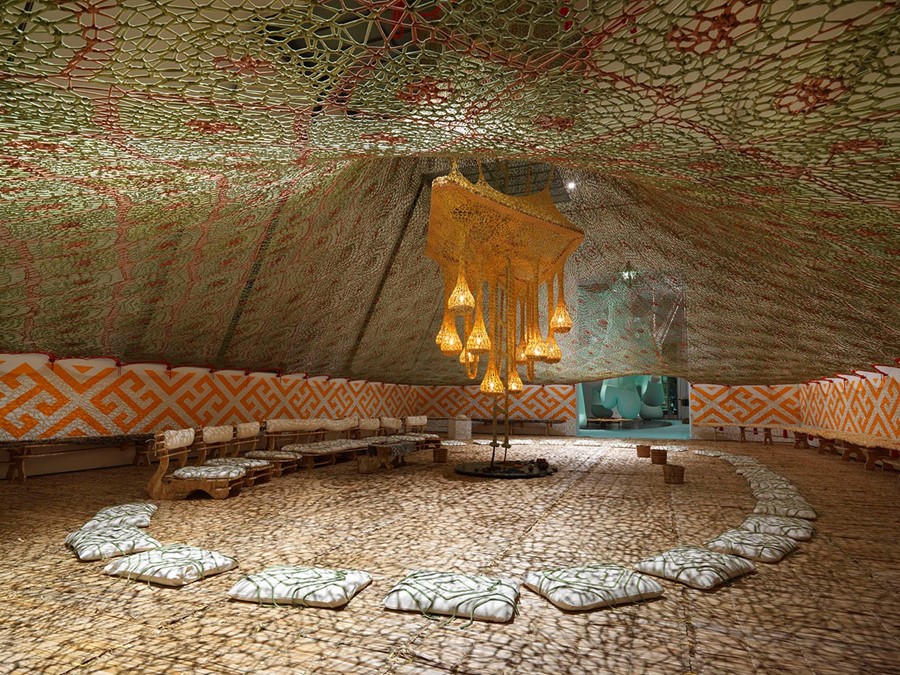Brazilian artist Ernesto Neto and the indigenous Huni Kuin people have transformed a Viennese art gallery into a unique site of healing
Who? Brazilian artist Ernesto Neto has joined forced with shamen, artists and plant masters from the Huni Kuin, an indigenous peoples from Brazil and Peru for the Aru Kuxipa exhibition at Thyssen-Bornemisza Art Contemporary (TBA21) in Vienna. The result is a transformative “site of healing”, that lets audience members discover the lives and spiritual practices of a small indigenous group, over 8000 kilometres away from their ancestral lands.
Neto, one of Brazil’s leading contemporary artists, is known for his huge installations of amorphous, pod-like hanging sculptures, or “fabric stalactites”, as he calls them. Soft and made of polyester hosiery filled with rice or sand, his work is playful and sensual, his pieces invites viewers to touch, lie on, and even smell the work.
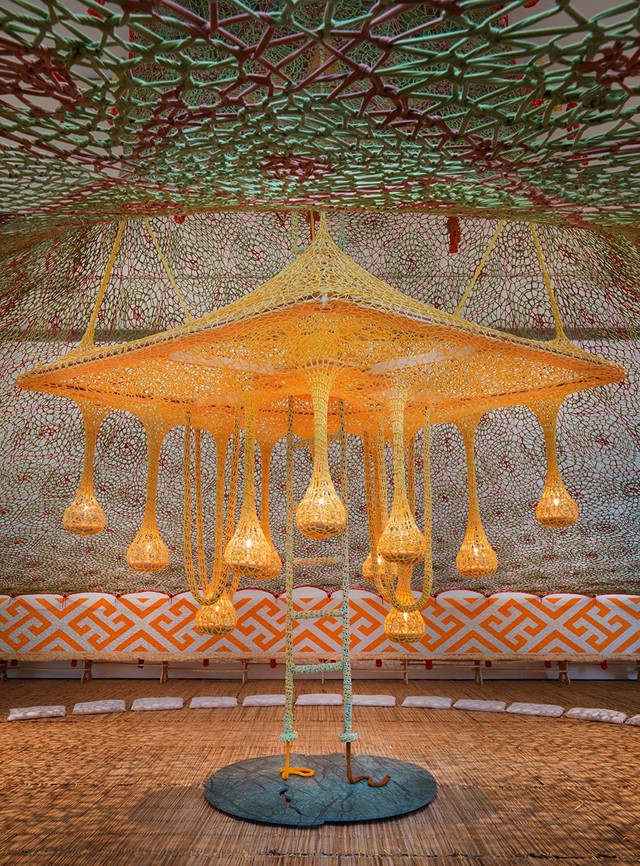
The Huni Kuin people have long been strongly resistant to interacting with outsiders, after a history of abuse, outbreaks of disease and being pushed out of their lands, which makes their work with Neto and the TBA21 all the more remarkable. Today, still mainly based to the south of the Brazilian state of Amazonas, in with a small population, estimated between 2, 400 to 7, 500, the Huni Kuin live from a mixed subsistence way of life, through hunting, gathering and fishing. As Neto explains: "The Huni Kuin had to create a new culture because they were previously forbidden to exercise it – the rituals, dancing, singing, speaking in their own languages. They had to fight to get back their culture. They had to go to more hidden villages to create the songs, the dances, the pajé, or shamanic knowledge. And this was very important, because this gave them the power, energy, and self-confidence needed to kick out the white people."
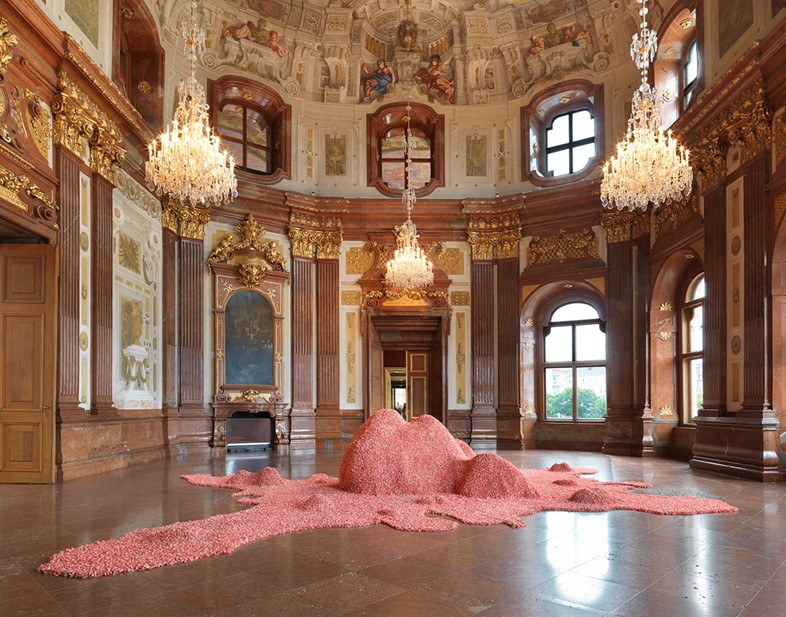
What? Together Neto and members of 37 Huni Kuin communities have worked together to create a space of transformation and of healing by combining Neto’s artistic language with the Huni Kuin’s music, rituals, oral history, drawings, waving and everyday objects. Visitors are invited into a sacred space, where the ceilings and walls are made of beautifully crocheted fabrics, filled with objects that play a vital role in the Huni Kuin’s ritual and healing practices, including, feathers, blowpipes and weavings. Deep inside the heart of the exhibition is the spiritual centre, the NixiForestKupiXawa, the space of celebration, gathering, ritual and contemplation. Within the exhibition you can see a Book of Healing, the first ever description of the 109 plant species used by the Huni Kuin for curative treatments, which took thirty years to make.
"The Huni Kuin had to create a new culture because they were previously forbidden to exercise it – the rituals, dancing, singing, speaking in their own languages"
Also on display is also one of Neto’s earlier works for TBA21, A Gente se encontra aqui hoje, amanhã em outro lugar. Enquanto isso Deus é Deusa. Santa gravidade (translated as "We meet each other today, tomorrow in another place. In the meanwhile, God is Goddess. Saint Gravity"), which shows Neto’s characteristic polymide forms hanging from the ceiling and intertwined, representing the ability of love and union to transcend all duality.
The exhibition lets visitors slowly transition from a space of preparation and initiation to the increasingly sacred sanctioned areas of ritual, knowledge and study, finally culminating in an exploration of the Huni Kuin’s myths and songs.
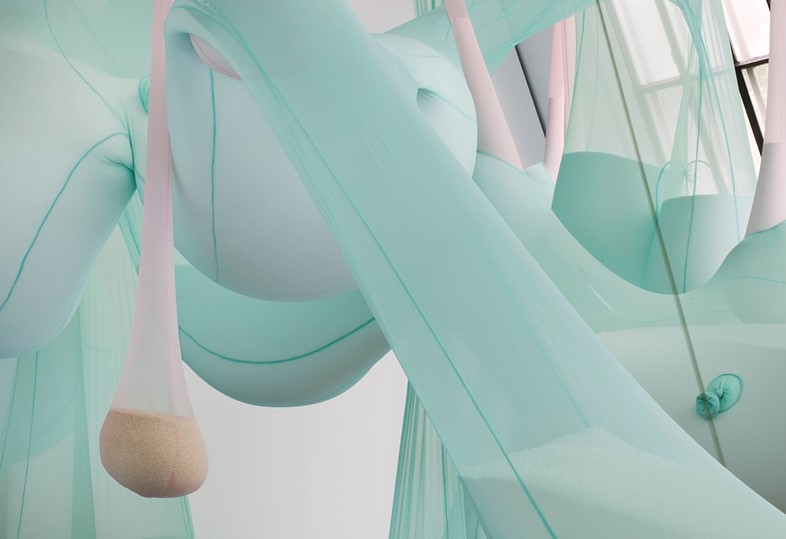
Why? Aru Kuxipa is the latest exhibition put on by the TBA21 to merge social and environmental exploration with a deeply exciting artistic practice. It began with Neto’s friend, the publisher Anna Dantes, who was working on the Book of Healing and invited him to meet the shamen and plant masters. Neto travelled deep into the Amazon from his home in Rio de Janeiro, where he sat in on sacred healing ceremonies, and experiences the Huni Kuin’s songs and rituals – it was the beginning of a close friendship with the Huni Kuin peoples, and it became a place to which he continually returned.
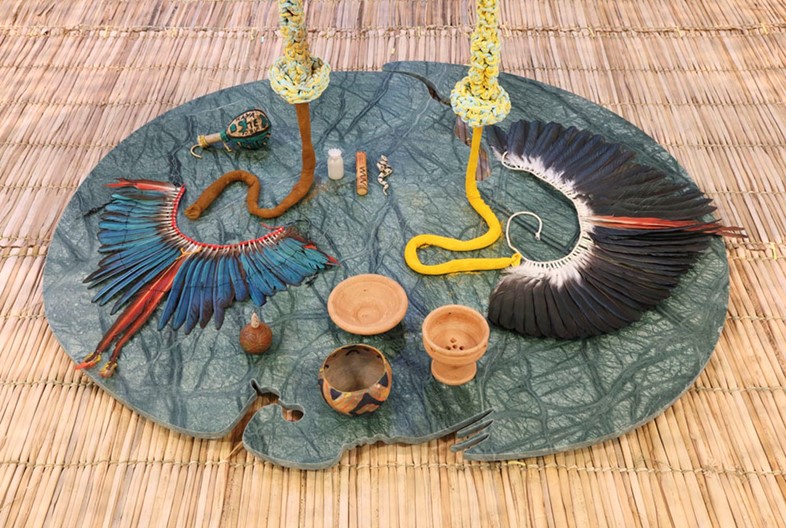
Neto says about his experiences with the Huni Kuin. “They are so much ahead of us... Even if they have a difficult material structure, they have a better life. Their cosmology is not like their own complex intellectual thinking over the cosmos, in the sky, near to God or something like that; no, it is here! In the small things of the daily life: the way you talk to each other, the way you share the things with each other, the way you take care of each other. The vision of the pajés (the shamen) is guided by the yuxin – the Great Spirit. This Great Spirit is not in the sky but here in the plants, in the animals, inside of us. He is a friend. Someone who is with you.”
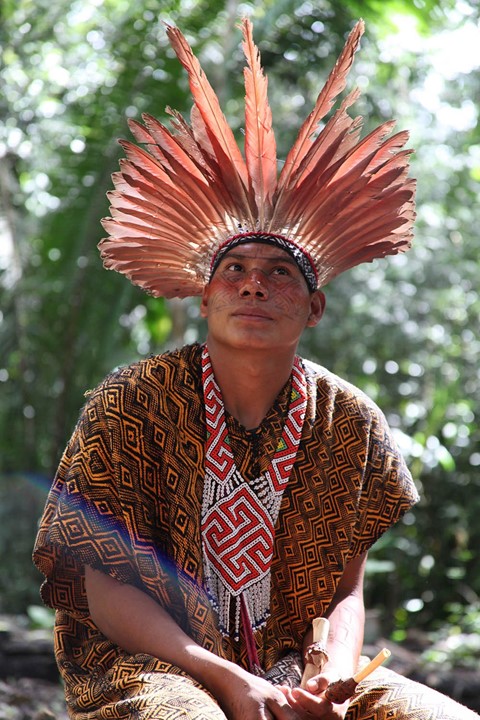
For Francesca von Habsburg, the founder and chairwoman of TBA21, who travelled with Neto to meet the Huni Kuin, the exhibition is a way of giving them the power to share their own stories, rather than having those narratives defined by outsiders, as they have been for too long. “I would… argue that we have a lot to learn from them. We not only need to listen to our planet, but we need to hear it,” von Habsburg explains, “We need to understand the ecology of thought and how it can help us take the better decisions over the worse ones. We need to let the planet speak to us, and if the Huni Kuin are one of the conduits, then we should not silence it in the name of humanity.”
Aru Kuxipa is at Thyssen-Bornemisza Art Contemporary until October 25.
